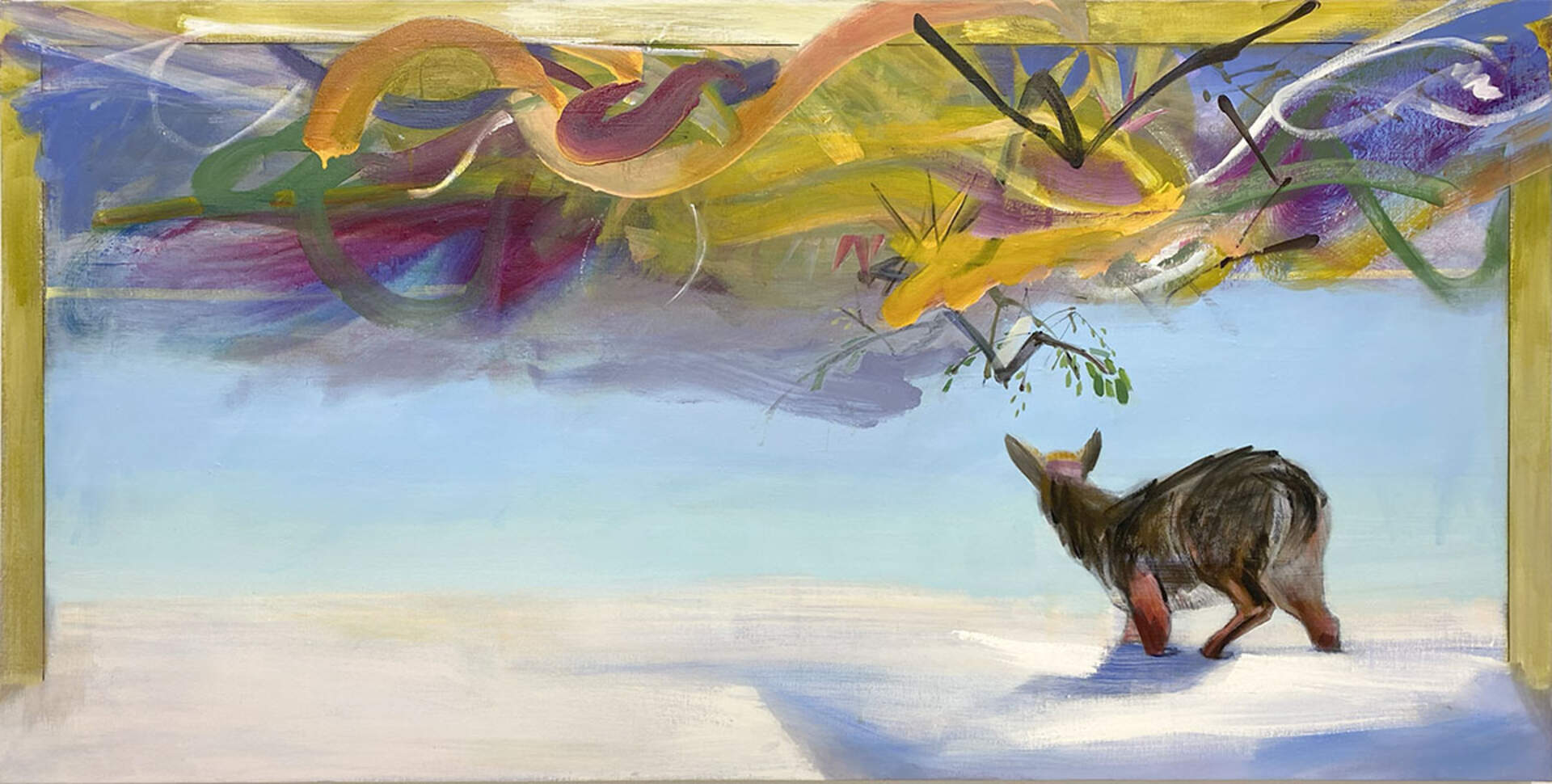Mike Glier (b. 1953)Doe Inhaling Spring
2023
acrylic on linen
36” x 72”
Courtesy of Downing Yudain, North Stamford, CT
EFFICACY
MG: Since we were talking about Umwelt, Doe Inhaling Spring, is another attempt on my part to imagine how an animal might experience the world differently. According to Clint A. McCoy, DVM whitetail olfactory epithelium is reported to have 297 million olfactory receptors, and we have only 5 million, so it’s safe to say that the doe’s sense of scent is much more intense. Since she seems to be smelling colors, maybe she is a synesthete, like Burchfield!
NW: What a great concept! She, like foxes and other animals and birds, can probably smell plants hidden under snow. Maybe she sees scents as colors through her dark brown eyes as her long muzzle inhales the air. So much of the world is concealed by our blunted senses or, simply, lack of perception.
MG: Although it’s not always obvious, I think of myself as a politically motivated artist, since I want my artwork to change people’s attitudes. More specifically, I want to be a part of a legion of people who publicly reject the notion that we have dominion over the earth and all its creatures and replace it with a philosophy of stewardship and reciprocity. I’m always debating with myself about how to support this change in thinking. Is it best to be confrontational and report on abuses or is it more effective to be celebratory and provide a sense of hope?
NW: Scathing critiques can be effectively dramatic. Burchfield revealed the destructive magnitude of hellish coke smelting and other polluting industries in Ohio as a young man. After he moved to Buffalo, he created some works about the massive steel industry along the Buffalo River. Black Iron (1935) showing mammoth counterweight bridges over the contaminated Buffalo River is widely considered the best work of his middle years. “I wanted it to look completely hard-boiled and uncompromising,” he said in a Smithsonian interview, “the water itself looked as though it might be liquid iron. It was black and oily and shiny....”
But I would argue that Burchfield’s transcendental paintings of his later years are the most inspirational. His way of expressing the complexities sometimes tapped his synesthesia—bringing sensory experiences on multiple levels into a visual language. It’s what we notice in his “grammar of animacy.” If people would only pay attention to how beautiful even the smallest detail can be, they might work harder to oppose industrialization and senseless destruction and try to preserve the landscape.
MG: Do you think Burchfield’s approach to representing the natural world was political?
NW: Yes. Political in the same sense as your politics of concern and engagement. Many of us have quoted his famous creed: “An artist must paint, not what he sees in Nature, but what is there. To do so he must invent symbols, which, if properly used, make his work seem even more real than what is in front of him. He does not try to bypass Nature; his work is superior to Nature’s surface appearances, but not to its basic laws.”
MG: It looks like we agree that both approaches, the critical and the inspirational, are necessary. But in the end, I find Burchfield’s ecstatic love to be most compelling. In the current ecological context, a work like Early Spring is a blast of hope; a motivating blast of hope that might inspire reverence and the will to preserve the living world. His most joyful works are brilliant propaganda. I’d like to see a million T-shirts printed with Early Spring and a collection of baseball caps emblazoned with Burchfield’s bird song abstractions!
NW: I’m all for it—I’ll be the first in line to wear them.
